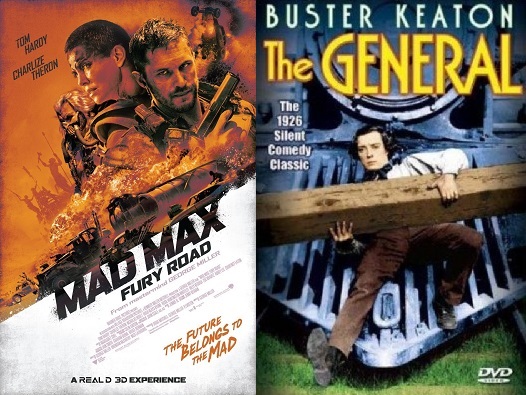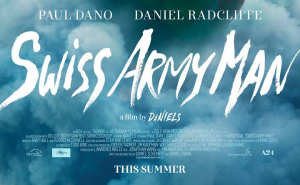
Since the inception of the motion picture, movement has dictated how the audience perceives this medium of art. From the first showings of the Lumiere brothers’ ‘Workers leaving a Factory’ to the modern reality-bending epics of today like Alfonso Cauron’s Gravity, our minds and emotions are moved metaphorically by the literal depictions that are on the screen. Of course these days we have an additional sense to consume on our cinema outings… sound. However, there are still visually stunning films that prove that actions are truly louder than words. To prove this let’s take a look at a recent journey epic Mad Max: Fury Road and compare it to its 90 year predecessor Buster Keaton’s The General.
The General, released in 1927, told the journey of a young southern gentleman pursuing his stolen beau from Northerner spies during the civil war. Without a second thought Keaton’s Johnny Gray hops into his title-hinting steam engine, The General, in hot pursuit. Through a series of comical obstacles including burning bridges, fast paced railroad tie clearing and mismanaged canon firing Keaton finally finds his stolen love interest. In the process of going back to the southern border, Keaton repays the Northerners by getting information to Confederate generals that result in a stupendous battle that leads to Johnny Gray’s redemption for his character.
The newest Mad Max film, Fury Road, the fourth iteration of the series shows its title character in the throngs of post-apocalyptic mayhem. When captured but the menacing leader Immortal Joe, Max escapes his bondage in a Ben Hur-esque fashion when the car his capture is driving gets destroyed. This leads him to meet Furiosa, a no-nonsense, bionic-armed centurion who is whisking away Immortal Joe’s wives to a mythological ‘green place’ via a military grade Tanker truck. Through a series of mind-blowing car chases the group of wives, Max, and Furiosa backtrack to Joe’s stronghold where they will create a better society in the wake of destroying Immortal and his minions.
Now in the broad sense, these are both films that relay on a ‘there and back again’ set up; the journey follows almost a straight path that eventually will be tread in reverse. Whereas Keaton’s tale tells of retrieval that is absolutely going to result in turning back home, Max makes it a point that the forward destination is the true intention until the ‘green place’ is revealed to no longer exist. This is what forces the retread back to the society.
An excursion can’t happen without a means of conveyance. Between The General and the War Rig truck in Fury Road we see vehicles taking precedent as not only as means of getting to the next point in the story but as an important set piece in and of itself. Though minimal for both films, dialogue between characters normally happens only inside the vehicles. Main characters are forced into intimate quarters where protection is supplied created, along with it the sense of entrapment; nothing can get in yet the main characters don’t really want to go out where danger resides. Because of these elements the vehicles also represent the industry of character driving it. Keaton’s Johnny is a hardworking and seen as faithful, just like Johnny whereas Furiosa is cold, has technology crudely spliced onto her and is intended to destroy anything that crosses its path similar to her War Rig.
The closing sequences of both films have mirroring imagery as well. Whereas Keaton loses his beloved train on a burning bridge, which was done in one take with a real steam engine, the War Rig burns bridges as well when a freed ‘war boy’ Nux destroys a canyon to block pursuing parties.
Two Movies. Two Eras. Both about the distances humanity can be pushed when characters are willing to go to find what they’ve misplaced whether it was lost or taken or never even there. Maybe along the way our heroes can find themselves too. Whether we as the audience take something from The General or Fury Road, we sure can enjoy the ride.







